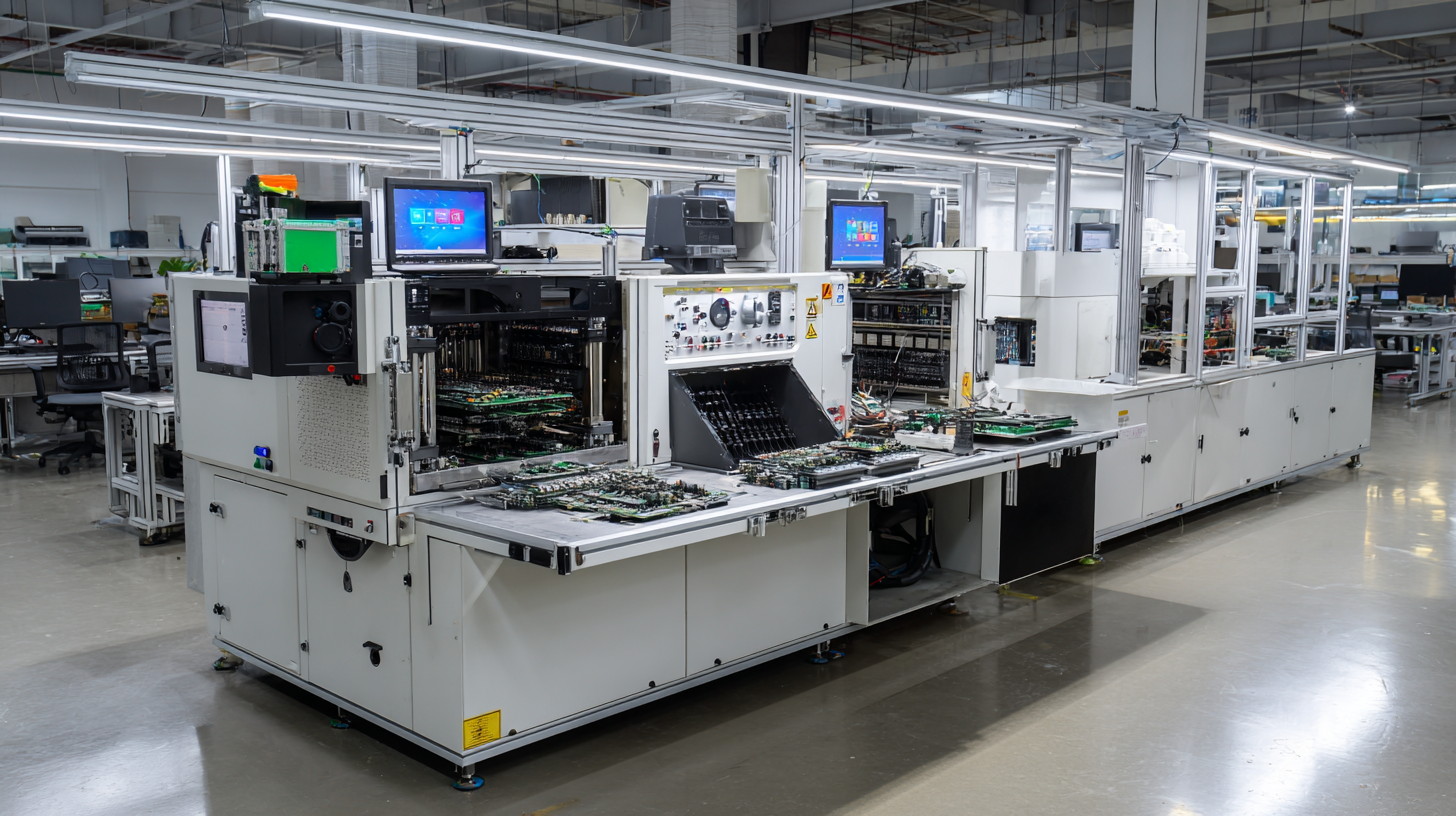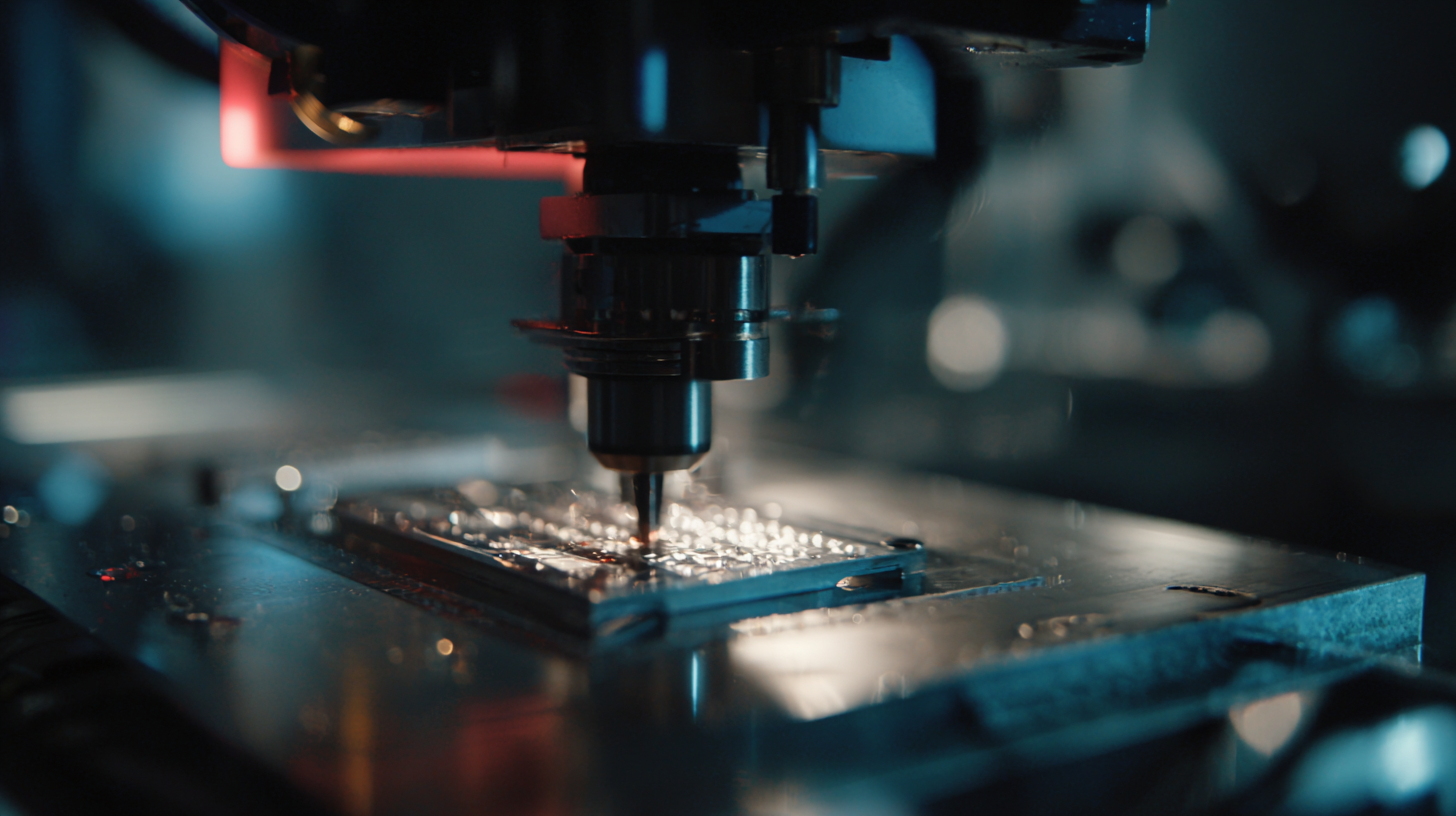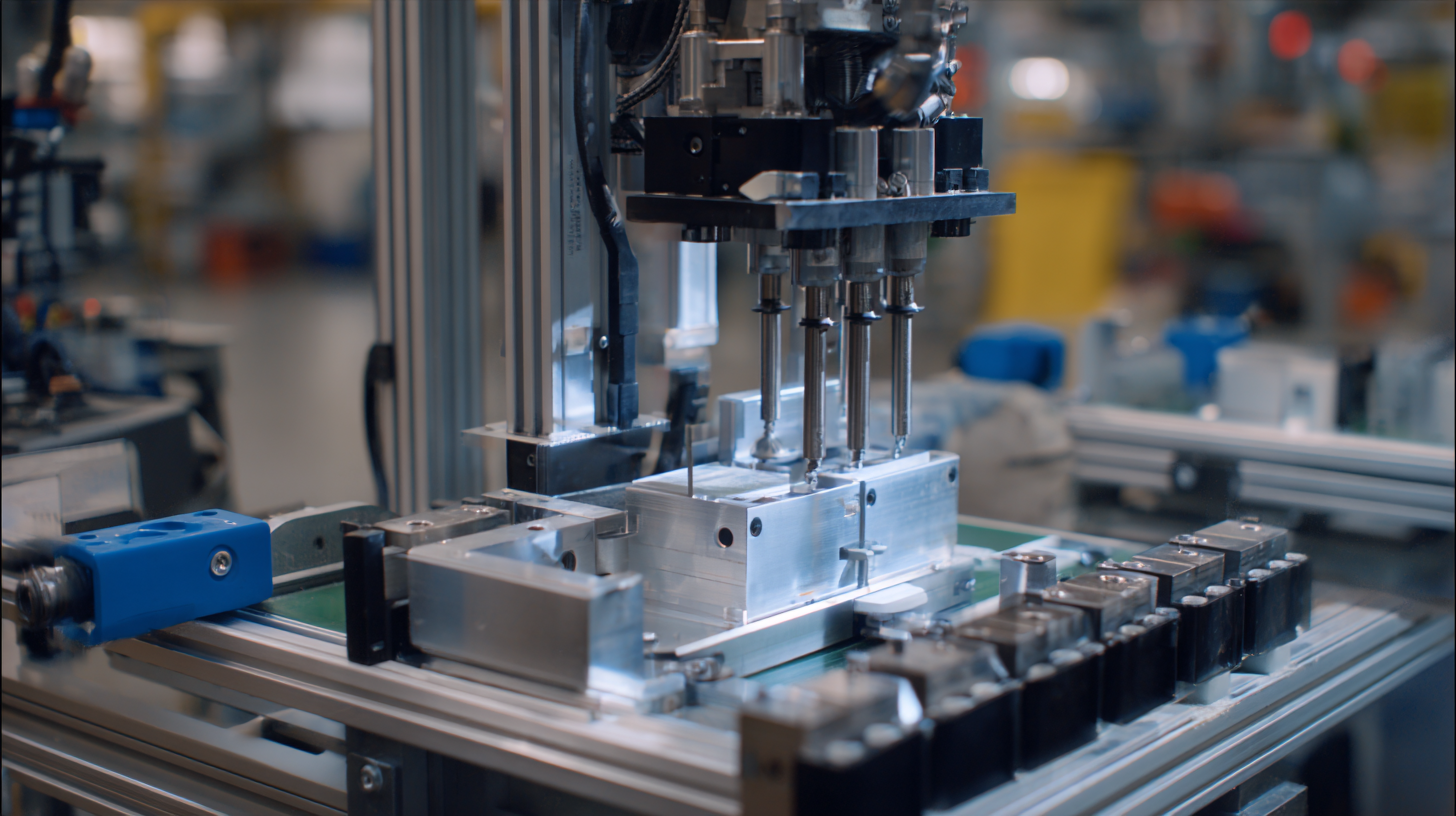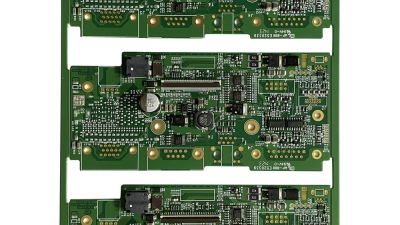Exploring Innovative Alternatives to Traditional Box Build Assembly Processes for Enhanced Efficiency
Table of Contents
- Challenges in the Conventional Box Build Assembly Workflow
- Identifying Inefficiencies in Traditional Manufacturing Practices
- Innovative Techniques to Streamline Assembly Processes
- Emerging Technologies Revolutionizing Box Build Assembly
- Case Studies: Successful Implementation of Alternatives
- Future Trends in Box Build Assembly Solutions
- Comprehensive Guide to Choosing the Best One-Stop PCB Assembly Service for Your Project
- FAQS
- Conclusion
- Related Posts
In today’s fast-moving world of electronics manufacturing, companies are always on the lookout for fresh, innovative ways to improve their traditional box build assembly processes. The goal? Boost efficiency and stay ahead in a market that’s constantly changing. Here at Zhuhai Xinrunda Electronics Co., Ltd., we’ve been around since 2004, and we know how vital it is to keep refining these processes if you want to remain competitive.

As a hi-tech electronics business, we’re dedicated to offering top-notch manufacturing services—think SMT, PTH, COB, and coating solutions—that meet the needs of our clients.
In this blog, we’re going to dive into some of the latest strategies and technologies that could really shake up the box build assembly process. The idea is to help businesses increase productivity and get products to market faster. So, stick with us as we explore what’s coming next in electronics manufacturing and see how these advancements can help your business succeed in a world that’s getting more complex by the day.
Challenges in the Conventional Box Build Assembly Workflow
You know, traditional box build assembly processes face quite a few hurdles that really slow things down and drag out productivity. I read somewhere—like a report from a top manufacturing research institute—that almost 30% of the time spent on assembly lines is actually wasted because of outdated workflows and poor communication among teams. It’s pretty clear that we seriously need to shake things up and come up with smarter, more efficient ways to handle assembly, so delays become a thing of the past.

Luckily, some newer companies are jumping in to challenge the old-school ways. Take Karkhana.io, for example—they’re trying to make manufacturing in complex ecosystems way simpler. By bringing in digital tools and real-time data, they’re making it easier to see what’s happening at every step, which helps cut down on mistakes and speeds things up. Interestingly, a survey of manufacturers found that those who adopted these new, innovative assembly methods boosted their efficiency by about 25%. Plus, they’re getting products to market faster than ever.
As the industry keeps changing, it’s really important for manufacturers to stay flexible and open to new ideas. By embracing smart tech and forging strategic partnerships, companies can stay ahead of the game—responding quickly to market shifts and streamlining their workflows at the same time. It’s all about working smarter, not harder.
Identifying Inefficiencies in Traditional Manufacturing Practices
Hey, you know, in today’s quickly changing world of manufacturing, sticking to old-school box build assembly methods often comes with a bunch of hiccups—stuff that can really slow things down and hold back innovation. Things like handling parts manually way too much, long wait times, and not having real-time data updates can make operations drag on and even end up costing more. Plus, it’s tough to react quickly to what the market wants if your process is bogged down.
So, if manufacturers want to get ahead, they really should think about bringing in lean practices and automation. Simplifying the workflow can make a huge difference. You might also want to try just-in-time inventory—keeping things lean and making sure parts are there when you need them, not sitting idle. Modular assembly methods are another game-changer; they let you put products together faster and swap out line setups quickly when product designs or orders change.
And don’t forget about digital tools. Using data analytics can shine a light on where the bottlenecks are so you can fix them. Smart sensors are pretty cool, too—they can keep an eye on your machines, catch problems early, and help keep everything running smoothly. Basically, by tackling these inefficiencies with smarter, more modern solutions, manufacturers can boost both their efficiency and their ability to adapt to new challenges. It’s all about staying ahead of the game!
Innovative Techniques to Streamline Assembly Processes
In today's super fast-paced world of electronics manufacturing, the old-school box build assembly methods often just can't keep up with what's needed in terms of efficiency and flexibility. To tackle these issues, companies like Zhuhai Xinrunda Electronics Co., Ltd. are really pushing the envelope, exploring new tech and smarter ways to get things done faster. By using cutting-edge stuff like automation, robots, and modular assembly systems, manufacturers are able to cut down their production times quite a bit and make the whole workflow smoother.
Zhuhai Xinrunda, which kicked off back in 2004, has been a real pioneer in weaving these innovative approaches into their assembly lines. They’re all about delivering top-notch electronics manufacturing services, including SMT and PTH, showing they really get how quickly the industry is changing. With flexible assembly lines and real-time data analysis, they can make quick adjustments on the fly—making sure quality stays high while still moving fast. As the industry keeps evolving, jumping on these innovative solutions will be key for companies wanting to stay ahead of the game.
Emerging Technologies Revolutionizing Box Build Assembly
The world of box build assembly is really changing fast right now, thanks to new tech that's shaking up the old ways of doing things. For example, automation is becoming a game-changer — it helps us get more done, faster, and also cuts down on mistakes humans might make. By bringing in robotic systems, companies can handle those boring, repetitive tasks, so skilled workers can focus on the really tricky parts of assembly. Plus, using IoT devices means you get real-time data, which makes it possible to tweak things instantly on the factory floor and keep everything running smoothly.
If you're looking to optimize your assembly process, one cool tip is to jump into digital twin technology. Basically, it lets you create a virtual replica of your entire setup. This way, you can spot issues or test out changes before actually making them on the real line — saving time and avoiding mishaps. And don’t forget about cloud-based platforms; they make teamwork way easier by enabling faster communication and decision-making, which is super important in today’s fast-paced market.
Also, incorporating augmented reality (AR) into both training and actual assembly work can really boost efficiency. Imagine giving workers real-time visual guides — it not only speeds up training but also helps cut down on errors. All these new technologies are not just changing the way we do box build assembly, but they're also opening up new possibilities for better, more efficient operation overall.
Case Studies: Successful Implementation of Alternatives
The world of box build assembly is really changing these days. More and more companies are on the lookout for fresh, innovative ways to do things instead of sticking to the old-school methods. Take this one case — a high-tech electronics company decided to switch things up by using modular assembly techniques. Basically, they broke down the whole process into smaller, interchangeable modules. And guess what? It ended up cutting down their production time and costs quite significantly. Not only did it make their operations smoother, but it also gave them more flexibility to keep up with what their customers wanted, even if demands shifted on the fly.

Then there’s another story from the auto industry that’s pretty interesting. A well-known car maker started using automated guided vehicles—AGVs—to support their assembly lines. Moving to this kind of automation meant less manual labor, and it really cut down on errors caused by people. Plus, it made the whole process more agile. These little bots could transport materials all around the factory floor pretty seamlessly, which reduced downtime and kept the workflow flowing better than before. These examples really show how innovative approaches are helping transform box build assembly, making companies more efficient and better able to adapt to changing needs across different industries.
Future Trends in Box Build Assembly Solutions
As manufacturing continues to change and adapt, the way we do box build assembly is also shifting — and for good reason. More companies are turning to innovative solutions aimed at boosting efficiency. We're seeing a big push toward automation and embracing Internet of Things (IoT) tech, which is really transforming the game. I recently came across a report from MarketsandMarkets that says the smart manufacturing market is expected to jump from 220 billion dollars in 2023 to over 530 billion by 2028. That kind of growth signals a pretty exciting future for advanced assembly methods. Not only do these trends help make processes faster and smoother, but they also cut down on operational costs, so manufacturers can stay ahead of the competition.
One pretty effective way to make box build assembly more efficient is by using modular assembly lines. They give you more flexibility and make scaling up or down much easier. Basically, with a modular setup, you can tweak things on the fly to match changing product demands without shutting everything down for ages. Plus, investing in AI-powered predictive maintenance tools can be a total game-changer—cutting down on unexpected equipment failures and boosting uptime. I read a McKinsey survey that said companies using predictive maintenance see maintenance costs drop by as much as 30%. Pretty impressive, right?
**Pro tip**: Consider going with modular designs so you can quickly adapt your assembly processes as needed. And don’t forget—adding IoT tech for real-time monitoring can really help you optimize workflows and get ahead of maintenance issues before they become big problems.
Exploring Innovative Alternatives to Traditional Box Build Assembly Processes
Comprehensive Guide to Choosing the Best One-Stop PCB Assembly Service for Your Project
When selecting a one-stop PCB assembly service for your project, several critical factors should be taken into account to ensure a seamless manufacturing process and high-quality output. XINRUNDA stands out in this space with 19 years of specialization in high-quality PCB Assembly, demonstrating a significant commitment to industry excellence. The company has cultivated extensive experience through partnerships with over 15 domestic and international businesses, underscoring its global reach and reliability.
A crucial aspect in choosing an assembly service is quality assurance, which is precisely where XINRUNDA excels. The company employs stringent quality control measures aligned with several prestigious certifications, including ISO9001:2015 and IATF16949:2016. These certifications are indicative of their commitment to maintaining international standards, thus ensuring that clients receive products that are not only reliable but also meet rigorous safety and performance benchmarks.
Furthermore, XINRUNDA enhances delivery reliability through a cohesive cooperation model involving well-trained teams across R&D, quality assurance, procurement, and project management. According to recent industry reports, companies that prioritize integrated services and maintain high standards in delivery and quality see a marked improvement in project outcomes. By leveraging XINRUNDA’s extensive expertise and proven track record, clients can navigate the complexities of PCB assembly with confidence, ultimately leading to successful project executions and technological advancements.
FAQS
: The main challenges include inefficiencies that waste nearly 30% of time due to outdated workflows and poor communication among teams, hindering efficiency and productivity.
Karkhana.io seeks to simplify manufacturing challenges by integrating digital solutions and real-time analytics to enhance transparency in production, reduce errors, and improve overall efficiency.
Organizations that adopt innovative assembly solutions report a 25% increase in operational efficiency and a significant decrease in time-to-market for their products.
It is crucial for manufacturers to embrace new methodologies to overcome the inherent inefficiencies of traditional assembly processes and to respond swiftly to market demands.
Innovative techniques include the use of smart automation, robotics, and modular assembly practices to significantly reduce production times and enhance overall workflow.
Zhuhai Xinrunda has integrated innovative approaches like flexible assembly lines and real-time data analysis into their assembly processes since 2004, improving quality and efficiency.
Real-time data analysis allows for immediate adjustments in the assembly line, ensuring that production is both efficient and maintains high quality.
Modular assembly is a technique that breaks down the assembly process into smaller, manageable sections, allowing for flexibility and efficiency, which is crucial for adapting to rapid market changes.
Adopting smart technologies can enhance operational efficiency, reduce production times, and enable companies to better meet customer demands in a fast-paced market.
The future outlook is focused on continued innovation and the adoption of advanced technologies, which will be essential for maintaining a competitive edge in a rapidly evolving industry.
Conclusion
You know, the old-school Box Build Assembly process has definitely been running into some pretty common problems—stuff like repetitive tasks and workflows that drag on forever. From what we've looked into, a lot of these traditional manufacturing methods are kinda bogged down with inefficiencies, which can really slow things down and hurt productivity. But the good news is, there's a shift happening. We're starting to see new approaches like lean manufacturing and automation come into play, helping make assembly work smoother and cutting down those long lead times.
And it gets even more exciting—technology like robotics and artificial intelligence is starting to shake things up and could totally change how we do Box Build Assemblies. In some of our case studies, we've seen real-world examples of these new methods making a difference—things like boosting efficiency and really improving the quality of the final electronic products. Looking ahead, it’s pretty clear that keeping up with these trends is key, especially for companies like Zhuhai Xinrunda Electronics. Staying on top of innovations will be essential if they want to keep offering top-notch manufacturing services in the future.
Related Posts
-

Mastering Import Export Certification for Best Small Batch Pcb Assembly Solutions
-

7 Compelling Reasons to Choose the Best Consigned Pcb Assembly Services Worldwide
-

2025 Top Trends in Best Electronic Circuit Board Assembly for Global Buyers
-

Mastering the Best Printed Circuit Board Assembly Process with Industry Production Standards
-

Innovative Examples of Best Printed Circuit Board Assembly Techniques in Modern Manufacturing
-

How to Maximize After Sales Support and Reduce Repair Costs for Best Printed Circuit Board Assembly Pcba
Blog Tags:


